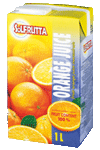Niet hoog, eerder zwak
 Het Gerecht, 27 januari 2010, zaak T-331/08, REWE-Zentral AG tegen OHIM/Grupo Corporativo Teype, SL
Het Gerecht, 27 januari 2010, zaak T-331/08, REWE-Zentral AG tegen OHIM/Grupo Corporativo Teype, SL
Gemeenschapsmerk. Oppositieprocedure tegen aanvraag Gemeenschapswoordmerk SOLFRUTTA o.g.v. ouder Gemeenschapswoordmerk FRUTISOL. Gerecht vernietigt de toewijzing van het OHIM. De similarity is op alle punten niet zo high als het OHIM dacht, maar eerder weak.
17. In respect of visual similarity, it is not appropriate to state, as did the Board of Appeal in the contested decision, that simple inversion of two identical elements is generally insufficient to make marks different. On the contrary, in certain circumstances and in certain languages, inversion of a composite word’s two constituent elements can significantly change the overall visual perception of that word. In the present case, the two signs at issue are visually similar to some extent since they both contain the elements ‘frut’ and ‘sol’. However, the fact that those elements are presented in a different order means that the two marks are significantly different, since each mark begins with a completely different set of letters. That inversion, together with the fact that the letter ‘t’ is doubled in the mark ‘Solfrutta’, and the fact that the letter ‘a’ is placed after the ‘frut’ element in ‘Solfrutta’ whereas the letter ‘i’ is placed after it in the mark ‘FRUTISOL’, make the signs sufficiently different to undermine the Board of Appeal’s conclusion that the two marks are highly similar in visual terms. In fact the two marks are visually only very weakly similar.
(…) 22. In the first category of Member States, consumers are liable to associate both marks with the notions of ‘fruit’ and ‘sunshine’. Contrary to the applicant’s argument that ‘FRUTISOL’ evokes the idea of the sun shining on fruits whereas ‘Solfrutta’ evokes a fruit ripened under the sun, both marks are liable to be perceived by the public in such Member States as evoking, in a general and unspecific way, the ripening of fruits in the sun. There will consequently be a certain level of conceptual similarity between them. However, since neither sign consists exclusively of two actual words in any Community language, joined together as one without any modification in their spelling, this conceptual similarity will not be high, contrary to the Board of Appeal’s conclusion.
(…) 29 In evaluating the Board of Appeal’s assessment of the likelihood of confusion in the present case, the Court c.onsiders that, although it is not disputed that the goods covered by the two trade marks include goods that are identical or similar, the Board of Appeal made a significant error in finding that the two signs at issue are highly similar. That error undermines the Board of Appeal’s assessment of the likelihood of confusion.
Lees het arrest hier.























































































